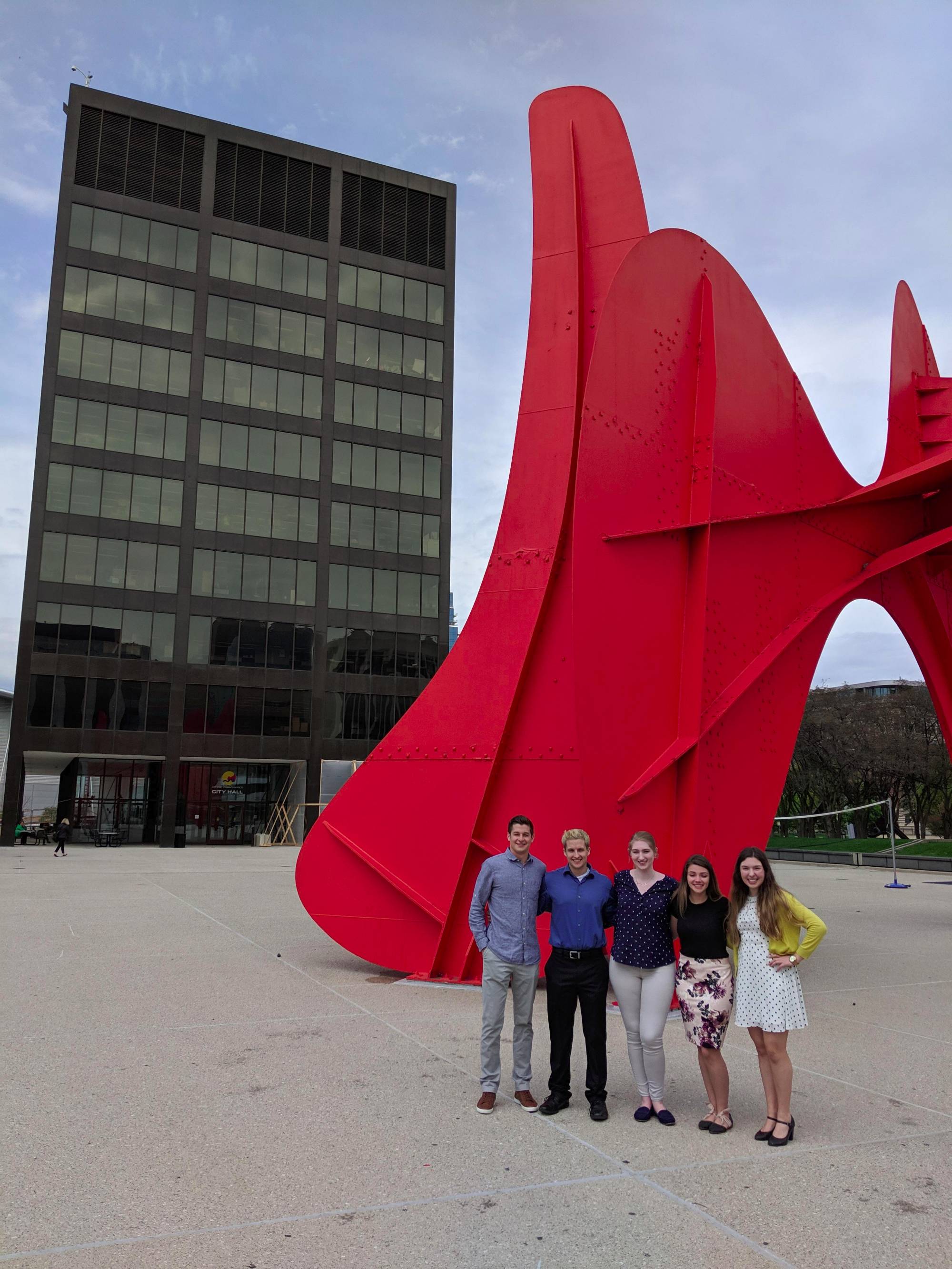A new applied math emphasis provides students with greater choice
Did you know that over half of the top 10 careers ranked by job satisfaction are accessible to math majors? On top of that, demand for math majors is expected to grow by about 25% over the next decade. Math majors are highly employable and have a wide variety of excellent career opportunities available to them.
Grand Valley math faculty have long celebrated the success our graduates have in turning their mathematical training into meaningful and satisfying careers. At the same time, we’ve felt we could do more to ease the transition from studying mathematics to putting it to use in a career. In addition, many students have told us how much they love learning and doing math but that they’re not aware of how math can be used in a career.
To better prepare students for career opportunities, the math department recently added an applied mathematics emphasis in Fall 2019 so that non-teaching math majors can choose whether to pursue a theoretical or applied track. To support this new emphasis, we’ve added new courses and hired two new faculty members, Professors Norma Ortiz-Robinson and Lora Bailey, whose expertise is in applied math.
One of the new courses, MTH 305 - Mathematical Modeling, is a requirement in the new emphasis and was developed by Prof. Ortiz-Robinson. In this course, students consider a variety of problems, from scheduling efficiency to predicting the evolution of a pandemic, and learn to develop mathematical descriptions of these problems so that they can be analyzed with the power of calculus, differential equations, and linear algebra. Students also complete courses in operations research and numerical analysis, and several courses place a greater emphasis on mathematical computing. We also changed our linear algebra curriculum to make it more focused on applications and to have two required semesters for all math majors not seeking teacher certification.

A team of capstone students after presenting at City Hall in May 2019.
The capstone of the emphasis is the new Project-based Applied Mathematics, a course in which teams of 4-5 students are paired with client partners from the local Grand Rapids community and spend the semester applying their mathematical training to answer some fundamental questions originating with their client. For example, this year a team of students is partnering with Emergency Care Specialists, a physician-owned business that staffs hospital emergency rooms around west Michigan. By studying a large dataset of ER patient surveys, the students are working to determine what factors drive patient satisfaction and to make recommendations to help improve satisfaction.
As befits the careers that many of our graduates enter, most of the projects are data-driven and require students to develop skills with industry-standard software for data analysis and visualization. Beyond that, students are challenged to coordinate their work on a large-scale, semester-long project with a group of fellow students. In this way, students develop project management skills, such as exploring alternative solution strategies and assessing their relative strengths, communicating effectively with one another, and setting long- and short-term goals and building structure to make sure those goals are met.
Another important part of the course is communicating frequently and clearly with their clients. This requires students to listen carefully to understand their partners’ priorities and to then describe the results of a technical mathematical analysis to an audience with less mathematical training and to persuasively justify recommendations based on that analysis.
The City of Grand Rapids has been another excellent partner who has enthusiastically embraced our students and welcomed the value of their work. One of the City’s missions is to use data to address social inequities. For example, one year our students analyzed demographic data from several west side neighborhoods to determine the role that development played in the displacement of people of color from those neighborhoods. They also developed software that determines median income by neighborhoods so that the City can pinpoint housing assistance more precisely. In addition to creating a storyboard hosted on the City’s website, the students presented their findings to a group of City Commissioners.
One further goal of the course is to let students know of the breadth of career opportunities available to them. To date, partners have come from the business community as well as the public and non-profit sectors. A few students have indicated that it was eye-opening to know they can impact their community through governmental work.
Prof. David Austin, who has led the class for the last three years, says, “What’s most satisfying is seeing how the students come to understand how valuable their mathematical training is and that they have a lot of opportunity because of it. Students feel more confident and recognize that their skills enable them to help others. It’s also great that our students have been able to provide valuable, actionable results for their partners. There’s really no end to the partnerships we could develop--there’s a real thirst in the community for people with mathematical skills.”
In addition to the new courses we have introduced, having new applied math faculty gives students access to a wider range of undergraduate research experiences. For instance, Prof. Ortiz-Robinson, now completing her third year at Grand Valley, has worked with a number of students on applied math projects, such as an application of optimal control theory to study cancer vaccine protocols. In a recent project, Prof. Ortiz-Robinson worked with a student to develop a data-driven model of the Covid-19 pandemic in Michigan, one of the few studies to focus exclusively on Michigan.
With these changes, we hope to better serve our students by providing them with a greater variety of academic experience as well as more specific career preparation and advising about available career paths. While it’s still early, there appears to be considerable and growing interest in the applied math emphasis. Ultimately, we see this interest as a testament to the power that mathematics has in shaping our world.

